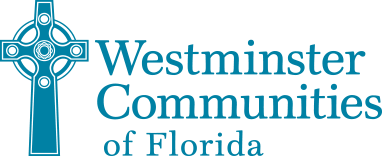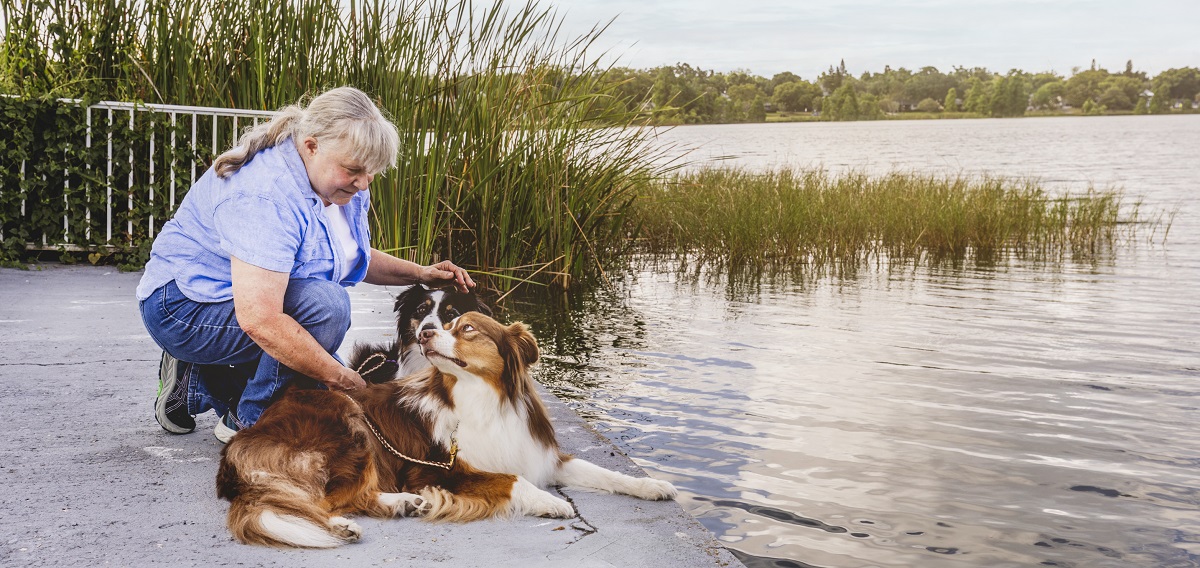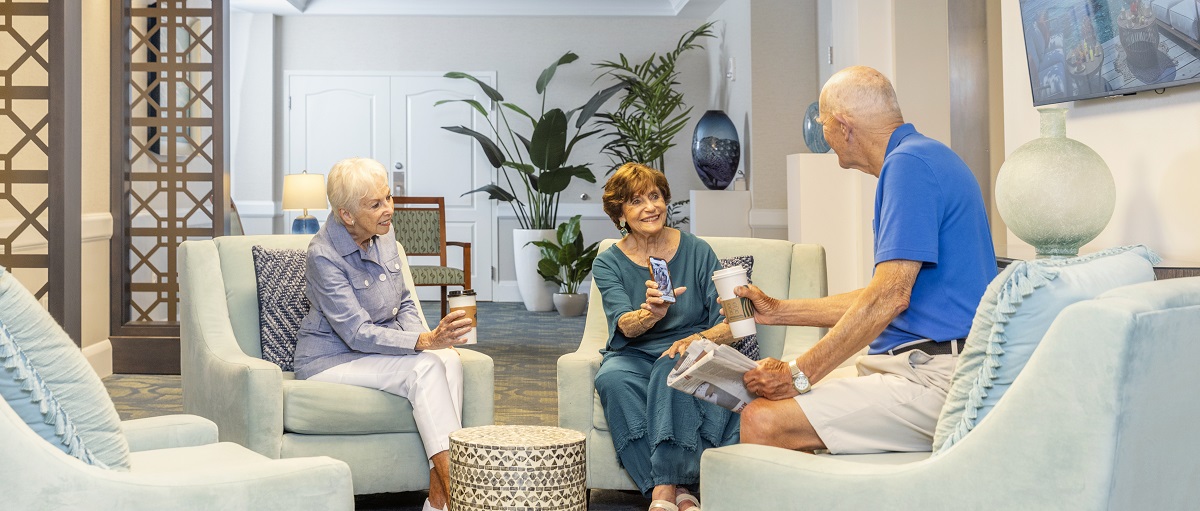Maintaining brain health is essential to living fully and independently as we age. At Westminster Communities of Florida, our Mission is inspiring happy, healthy, and purposeful aging with lifestyle offerings that nourishes the body, stimulates the mind, and fosters meaningful connections.
Decades of research have shown that we can promote better brain function and even encourage neuroplasticity—the brain’s ability to reorganize, adapt, and grow new neural connections—by making a few key lifestyle choices. Here are five essential habits for protecting and enhancing brain health, starting today.
1. Exercise Regularly and Challenge Your Brain While You Move
Regular physical activity increases blood flow to the brain and supports memory, mood, and cognitive processing. But it’s not just about movement. Dual-task training, which combines physical activity with problem solving, memorization, focused concentration or other cognitive tasks, has been shown to offer even greater benefits for the aging brain. For example, walking while counting backward, balancing while tossing a ball, or learning a new line dance challenges the brain in new ways, reinforcing coordination and cognitive flexibility.
According to the Journal of Aging and Physical Activity, seniors who practice dual-task training see improvements in attention, reaction time, and mental flexibility, all of which decline with age.
Try physical activities like:
- Brisk walking while chatting with a friend
- Yoga and classes with movement sequences that require memorization
- Tai chi or dance classes that combine rhythm, balance, and mental focus
At Westminster Communities, residents enjoy a variety of group fitness classes, including balance workshops, yoga, dance classes, and strength training, all supported by senior wellness professionals.
2. Eat a Brain-Healthy Diet
What you eat fuels your brain as much as your body. Nutrient-dense foods rich in antioxidants, healthy fats, vitamins, and fiber can reduce inflammation, support cognitive function, and protect against memory decline.
Top brain-boosting foods include:
- Leafy greens like spinach and kale (vitamin K, folate)
- Berries (antioxidants, flavonoids)
- Fatty fish like salmon and sardines (omega-3s)
- Whole grains (fiber for stable blood sugar and heart health)
- Nuts and seeds (healthy fats, vitamin E)
At Westminster Communities, our chefs prepare meals using fresh ingredients, with brain-healthy and heart-healthy options clearly labeled on every menu.
3. Stay Socially Connected and Keep Learning
Strong relationships and regular social interaction are vital to brain health. Research from The Lancet Healthy Longevity confirms that people who maintain active social lives experience slower cognitive decline and lower risk of dementia.
Just as important is continued learning and exposure to new experiences, which promote brain plasticity and neural growth. Challenging the brain with novel activities strengthens connections and builds cognitive reserve—the brain’s ability to adapt and function even when facing age-related changes.
Great ways to stimulate the brain include:
- Attending lectures or educational workshops
- Learning a new language, game, or instrument
- Participating in creative arts
- Engaging in meaningful conversation
At Westminster Communities, residents enjoy a vibrant social calendar, educational opportunities, creative programs, and access to MyWLife, a digital platform that helps them stay informed and involved. They can also use MyWAssistant, an Alexa-enabled voice tool that offers daily updates, helps manage schedules, and controls smart devices within the home. Our senior living communities in Florida support lifelong learning with a wide variety of resident clubs, art studios, guest speakers, tech tutorials, cultural events, and trips that offer something for every interest.
4. Prioritize Quality Sleep
Sleep is essential for brain function and long-term cognitive health. During sleep, the brain consolidates memories, clears waste products, and resets emotional regulation. Older adults should aim for 7–8 hours of sleep per night. Establishing a calming evening routine—such as light reading, a warm bath, or gentle stretching—can improve sleep quality.
Westminster wellness teams support residents in developing healthy sleep habits and exploring gentle, non-pharmacological ways to manage sleep challenges.
5. Manage Stress to Protect the Brain
Chronic stress can have a damaging effect on brain health, especially in older adults. During periods of prolonged stress, the body produces high levels of cortisol, a hormone that can shrink the hippocampus, which is the part of the brain responsible for memory and learning. According to a 2022 review in Frontiers in Aging Neuroscience, chronic stress accelerates cognitive decline, increases inflammation in the brain, and interferes with sleep and immune function.
Simple daily practices can help reduce stress and lower cortisol levels:
- Deep breathing or guided meditation
- Gentle movement like yoga or tai chi
- Listening to calming music
- Spending time in nature, with loved ones, and pets
- Practicing gratitude or journaling
Westminster offers a wide range of programs designed to reduce stress and promote emotional well-being, including meditation sessions, wellness coaching, and walking paths and boating opportunities from our beautiful campuses where nature abounds.
Westminster Communities of Florida and Brain Health
Each of these five keys to senior brain health, exercise, nutrition, sleep, social connection, and mental stimulation, are integrated into everyday life at Westminster Communities of Florida. Here, brain health isn’t just about avoiding decline, it’s about thriving. By building these five habits into your daily routine, you or your loved one can stay mentally sharp, physically strong, and deeply connected at any stage of aging.




